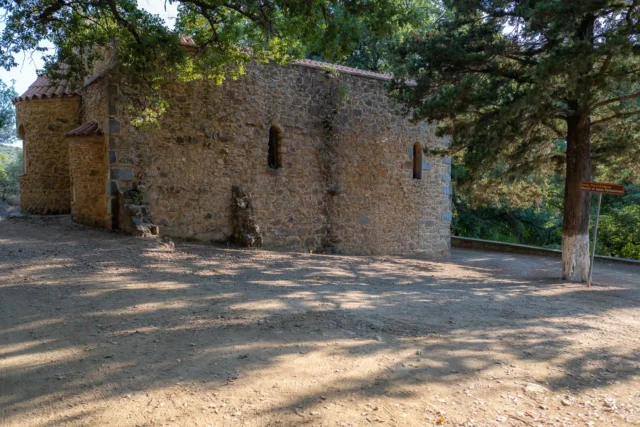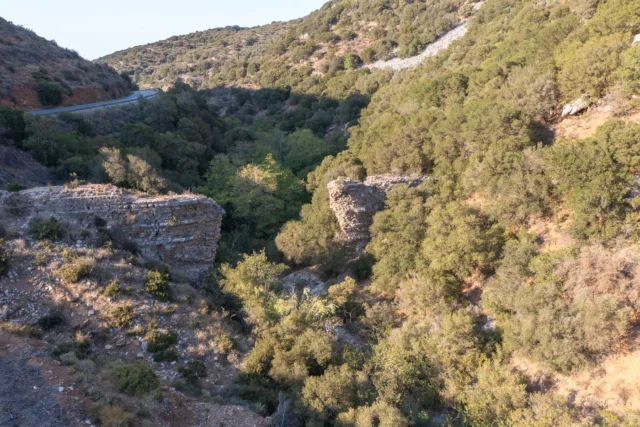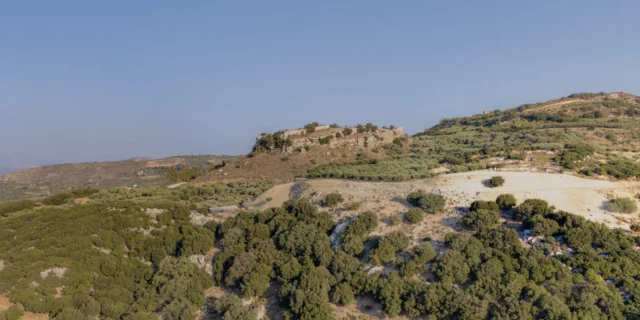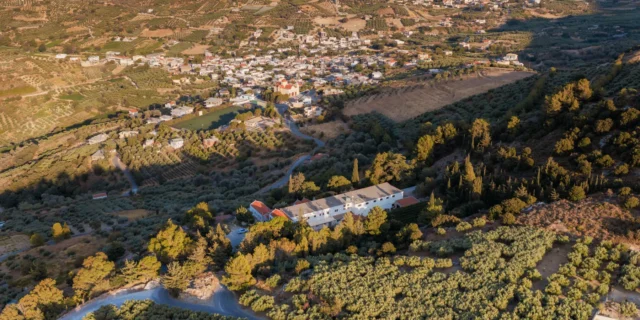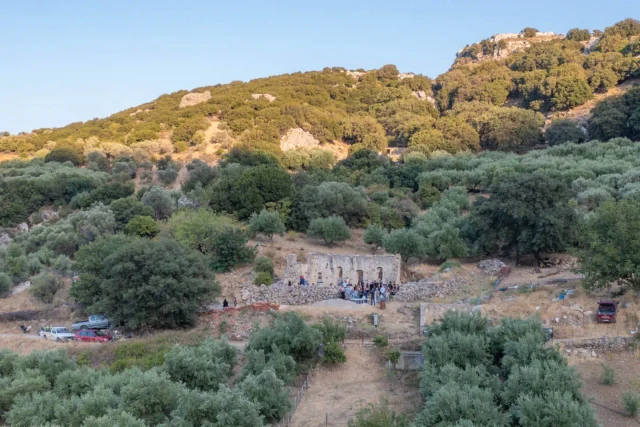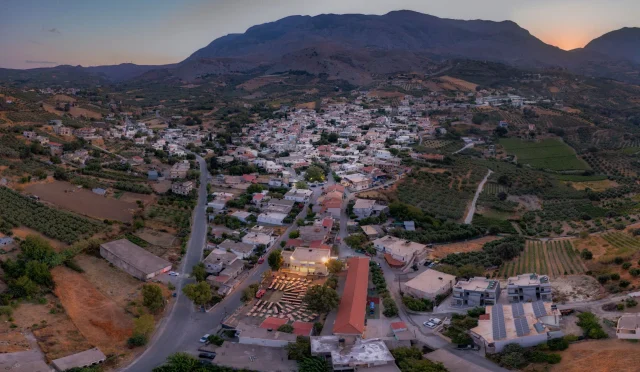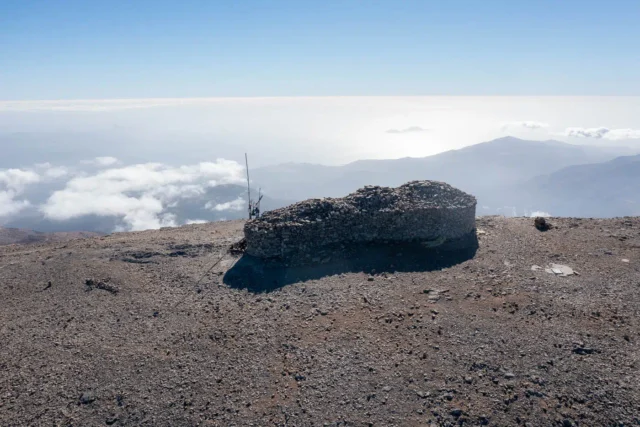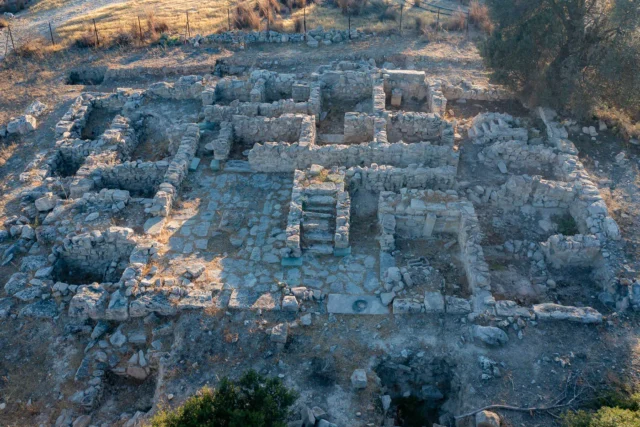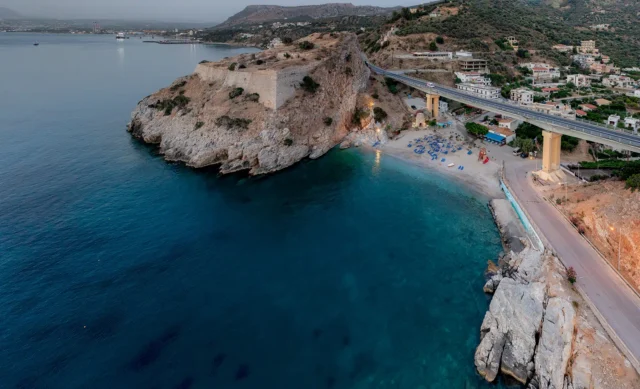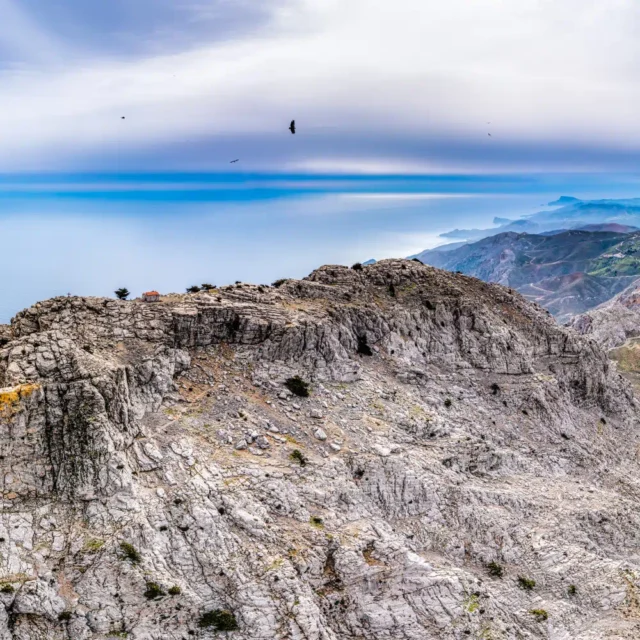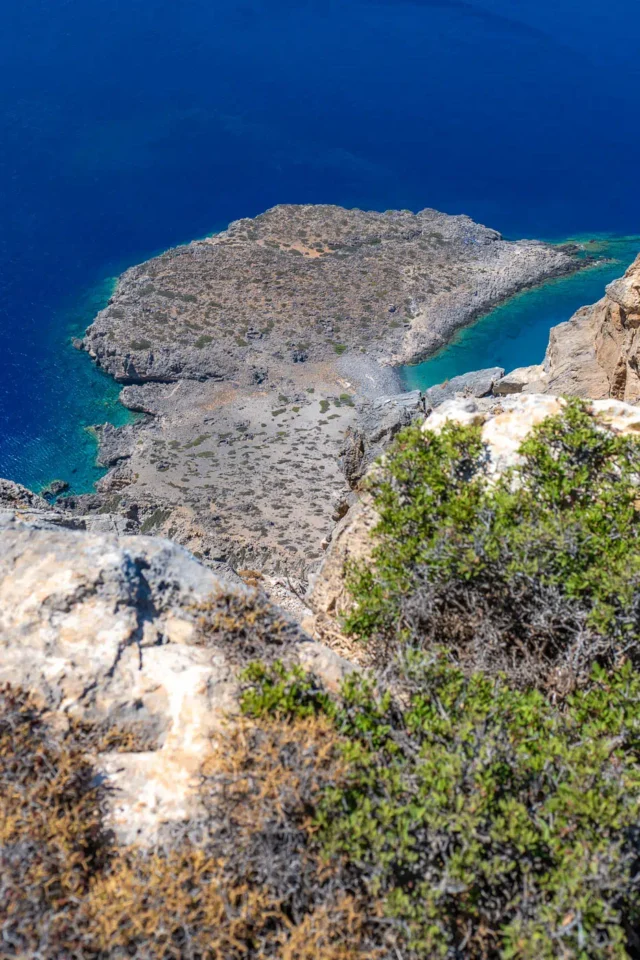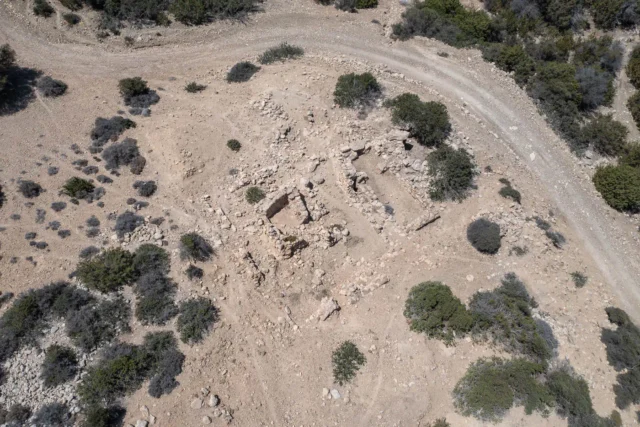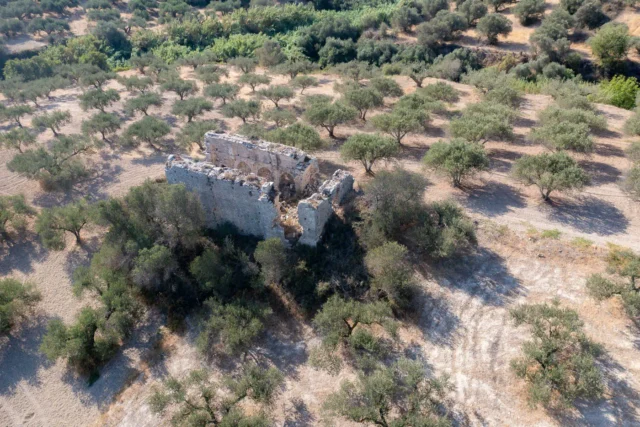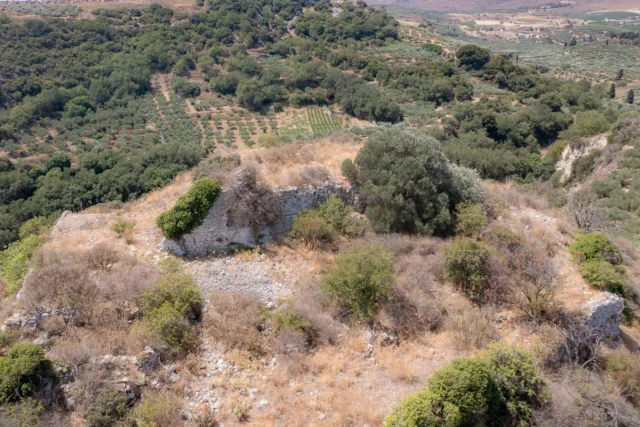748
listings found
Categories
Active filters:
Agios Panteleimon in Bizariano
Agios Panteleimon, a Byzantine church in Crete, showcases 11th-century frescoes and unique architecture.
The Aqueduct of Chersonesos
Discover the ancient aqueduct of Chersonesos in Crete, a marvel of Roman engineering that supplied water to the city for centuries. Learn about its construction, significance, and connection to the broader Roman presence on the island.
Kastellas Hill
Kastellas Hill near Moni Gorgolaini in Kato Asites, Crete, offers historical significance and scenic views.
The Holy Monastery of Agios Georgios Gorgolaini
Discover the Holy Monastery of Agios Georgios Gorgoeleimonos in Crete, a historic site with a rich legacy of resilience, faith, and cultural preservation.
Agios Antonios in Petali
The Monastery of Agios Antonios in Petali, Crete, is a historic site dating back to the Venetian era. Explore its unique architecture, rich history, and ongoing restoration efforts.
Kato Asites, Heraklion
A village on the eastern slopes of Mount Psiloritis, 24 kilometers from Heraklion. It features the Gorgolaini Monastery, founded in 1320 and the tomb of Captain Fragias Mastrachas. The Church of Agia Paraskevi is a notable site. The Cultural Association "To Gorgolaini" preserves local heritage, organizing events that showcase traditional music and dance. The area supports professions like carpentry and jewelry, with women's cooperatives producing local food. It is a starting point for the E4 hiking path to Prinos peak.
Timios Stavros peak, Psiloritis mountain
At 2456 meters, Timios Stavros is the highest summit of Crete's Psiloritis mountain range, offering 360-degree views of the island, Aegean, and Libyan Seas. It is accessible via the E4 path from Nida Plateau or the stone-paved "Strata tou Psiloriti" trail. The peak features a dry-stone chapel. The range includes other notable peaks such as Agathias, the second-highest; the pyramidal Stolistra; and Skinakas, which is the site of a well known observatory.
Pitsidia Minoan villa
Minoan villa ruins near Pitsidia, Crete, dating back to 1700-1450 BC. Insights into Minoan daily life, architecture, and earthquake response.
Paleokastro beach
Paliokastro beach, 14 kilometers west of Heraklion, features a blend of natural beauty and historical significance. Located within a valley carved by mountain streams, the cove includes a Venetian fortress, Paliokastro, built on the ancient Kytaeon acropolis. The beach has deep waters, a pebble shoreline, and rocky seabed suitable for snorkeling and fishing. Residents frequent this tranquil area, which offers tavernas, hotels, and a mini-market in a restored limekiln. The beach is accessible via the Heraklion-Chania highway.
Kofinas peak
Kofinas peak sanctuary in Crete offers insights into Minoan religious practices, societal structures, and the relationship between humans and the natural world.
Lithino Cape, Kefali peak
Lithino Cape, the southernmost point of Crete, features a rugged landscape with cliffs and remnants of WWII German fortifications. The cape's strategic location, offering a commanding view of the southern coastline, led the Germans to construct these fortifications to defend against potential invasion. Mount Kefali, situated on the cape, rises to an elevation of 388 meters and offers stunning views of the coastline, Gavdos, and the Asterousia Mountains. Atop Kefali Peak stands the small stone church of Timios Stavros, a testament to the site's enduring importance as a place of worship and refuge. The ruins of pillboxes built by the Germans during the Second World War are a stark reminder of the cape’s strategic value.
Skaniari Lakkos
Skaniari Lakkos, a Minoan cemetery complex located in the Asterousia Mountains of southern Crete, provides valuable insights into Minoan burial practices and social organization during the Bronze Age. It features five distinct burial structures, including two tholos tombs and three rectangular buildings, each containing multiple chambers and showcasing a variety of architectural styles. These structures date back to the Final Neolithic period (c. 3500 BC) to the Middle Minoan IB period (c. 1900 BC). Excavations at Skaniari Lakkos have yielded a wealth of artifacts, including pottery vessels, stone tools, jewelry, and seals, providing information about Minoan material culture, artistic expression, and trade networks. The presence of imported goods suggests connections with other regions in the Aegean and beyond. The site's remote location and the monumental nature of the burial structures underscore the importance of death and the afterlife in Minoan society. Skaniari Lakkos is part of a broader network of Minoan settlements and burial sites in the Asterousia region, including Trypiti, Doukiania, and the tholos tombs of Kefali and Moni Odigitria.
Ruined Church of Michail Archangelos
Located in the fertile Kaminos valley, shared by Skalani, Prassa, and Kallithea villages in Crete, stands the ruined Church of Michail Archangelos. This Venetian-era structure, situated in the Kavousi area, was historically significant due to its proximity to a vital year-round spring. Once part of a medieval settlement, the church is now partially collapsed but remains more intact than the nearby ruined Christos church. Its state underscores the impact of time and possibly seismic events, highlighting the region's vulnerability, as evidenced by the 2021 Arkalochori earthquakes, necessitating preservation efforts for Cretan cultural heritage.
Church of Michail Archangelos
The Church of Michail Archangelos: A Byzantine Monument in Arkalochori, Crete Located in the old cemetery of Arkalochori, a short distance from the village, the Church of Michail Archangelos stands […]
Margarites tholos tomb
Late Minoan Tholos Tomb at Margarites, Mylopotamos During the winter of 1996-1997, a significant Late Minoan III period tholos tomb was excavated on the property of M. Papadakis, in the […]
Melesses fortress
The Melesses Fortress, located east of Melesses village in Heraklion, Crete, represents a Byzantine-era stronghold. Its hilltop location provided strategic defense and control of a vital trade route. Architectural ruins reveal stone walls, a central tower, and evidence of earlier Hellenistic occupation. Constructed during the 9th-10th centuries to protect Crete from Arab raids, the fortress highlights Byzantine military and social structures. Its strategic significance is underscored by its proximity to the Karteros River and its role in Crete's defense network. Studies indicate its economic importance in regulating trade between the coast and inland plains. The site's history reflects Crete's complex past and its resilience during the Byzantine period.
Panagia Mavridiani in Meronas
Panagia Mavridiani, or Church of the Nativity of Mary, stands near Meronas, Crete, with origins in the 13th century, expanded in the 15th and 16th. The church features two aisles; the older, 13th-century section displays Byzantine architecture with a domed, single-nave design and 13th-century fresco remnants. The northern aisle, dedicated to Saints Constantine and Helen, was added in the 16th century. Frescoes, though partially lost, portray scenes like the Nativity of Mary, Annunciation, Ascension, and Second Coming, alongside saints such as Gregory, Romanos, and Panteleimon. Restored in 2012, it is a testament to Byzantine artistic and religious heritage.
Meronas
Meronas, in Rethymno's Amari valley, features a rich history from antiquity to Ottoman rule. Notable are Byzantine churches with 14th-16th century frescoes, a Venetian-era tower, and the 19th-century Koules. The village's cultural association preserves traditions with events like Carnival, Easter celebrations, and music schools. Historical records date to 1301, with population fluctuations noted from the 16th to 21st centuries. The village includes the churches of Assumption of the Virgin Mary, Panagia Mavridiani, and Saint Panteleimon, showcasing varied architectural and artistic periods.









